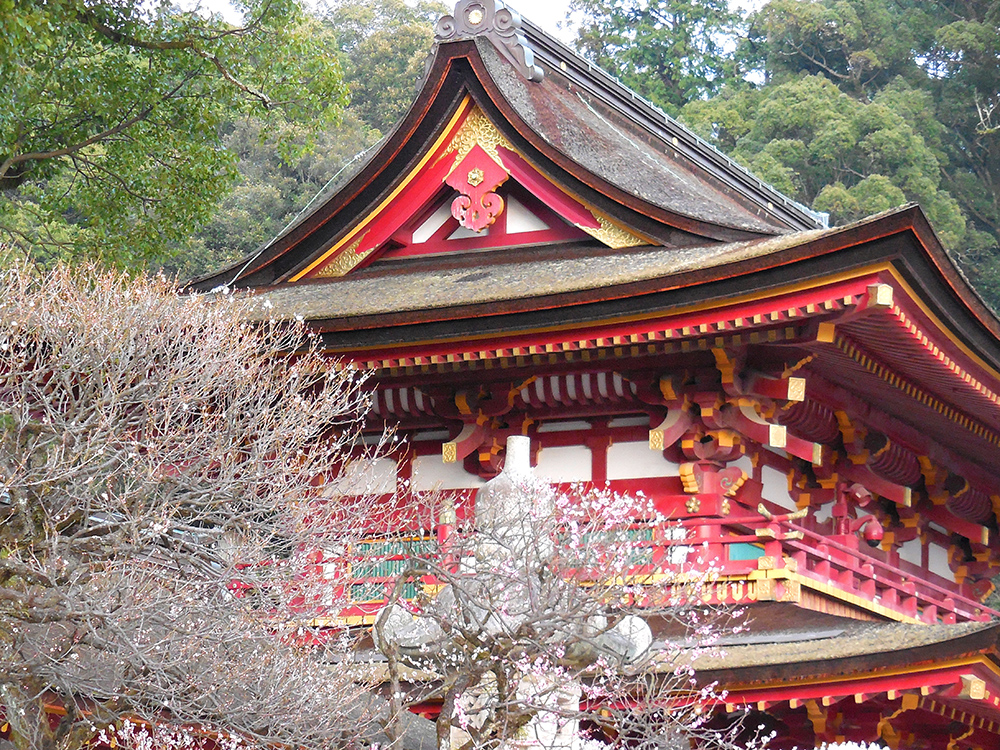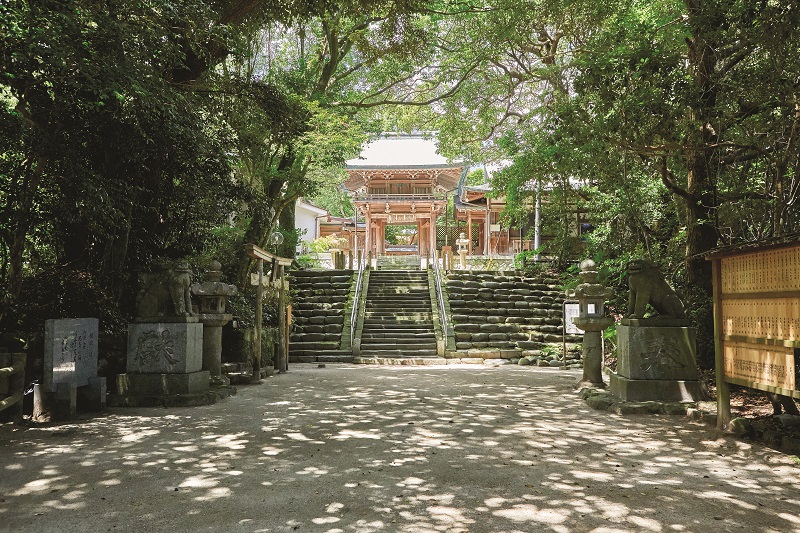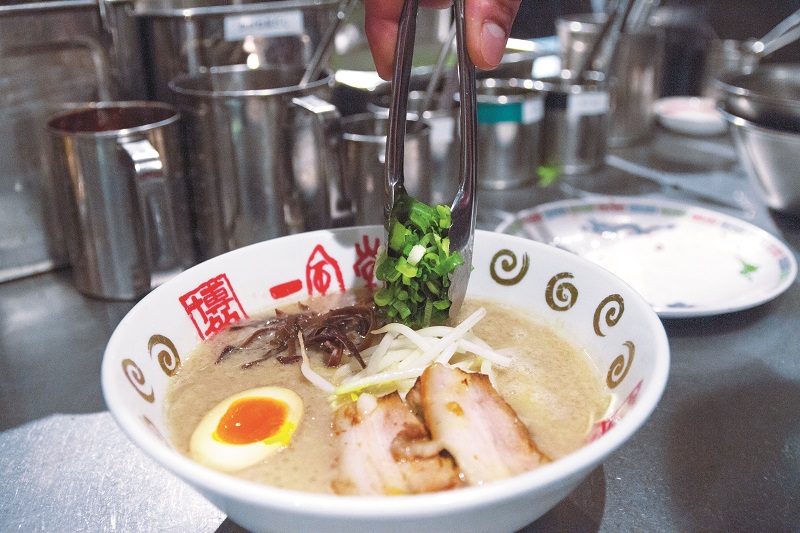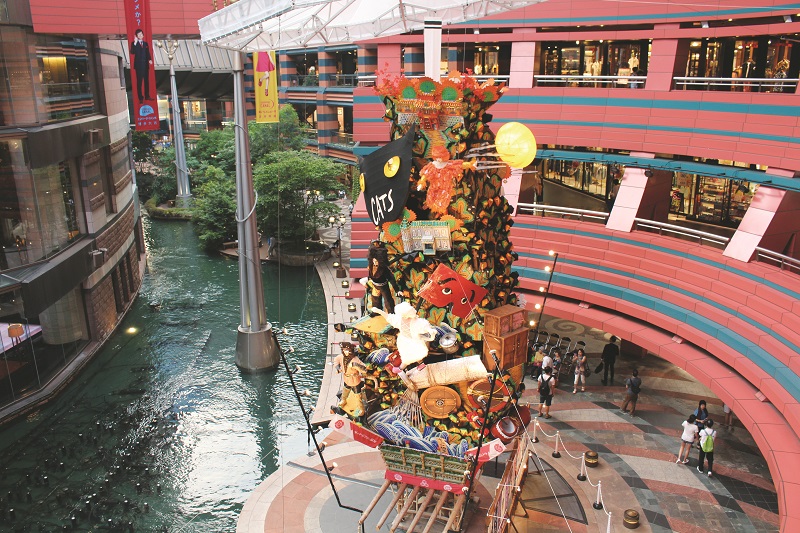
Dazaifu Tenmangu Shrine (All photos: JNTO)
Located in the southern island of Kyushu, Fukuoka has been a gateway to and from continental Asia for thousands of years. If your timing is right, you can visit during a matsuri (festival) or join the friendly locals for hanami (cherry blossom viewing) when the city’s one thousand sakura trees are in full bloom.
The city dates back to the 12th century when Hakata developed as a bustling commercial centre on the eastern side of the Naka River. The city of Fukuoka was established on the other side of the river around a castle built by Nagamasa Kuroda in the 17th century. In 1889, the two cities were merged into what is Fukuoka today.
Nowadays, the castle is one of the main tourist attractions of the city. Built atop a hill overlooking the river in what is now Maizuru Park, the castle was abandoned and many of the buildings were taken down after 1871 when the feudal system was abolished. Only a small portion of the original structure with its towers, gates and yagura (turrets) is visible today. In 1987, a korokan, or guest house for foreign diplomats, was discovered under the castle. This korokan is the only one to be unearthed so far in Japan and is witness to the importance of the city as a gateway to the rest of Asia throughout the centuries.
A short walk from the castle is Ohori Park, once the moat of the castle, with hundreds of cherry trees, small Japanese gardens and pagodas that are lit up at night. Around April, you will be able to join the locals for hanami when the thousand or so cherry trees that adorn Maizuru and Ohori parks are in full bloom.

Its physical proximity to the Asian continent has been a mixed blessing for Fukuoka. On the one hand, it fostered commerce and cultural exchanges with South Korea and China, as witnessed by a solid gold seal bearing the words “Kan no Wa no Na no Koku O” or the “King of Na state of Wa” on display at the Fukuoka City Museum. The artifact, classified as a National Treasure, dates back to 57AD and was a gift from the Chinese Han Emperor Kuang-wu to an envoy of the King of Na state of Wa (Japan).
On the other hand, it was the chosen point of entry for less-welcome visitors. Fukuoka is in fact the spot the Mongols eyed for their failed attempts to invade Japan in the 13th century. The first time they were defeated by the local armies while the second time the Mongols were sent back swimming when their fleet moored in Hakata Bay was destroyed by a divine wind, or kamikaze.
The remains of a 20km wall built by the Kamakura Shogunate to keep the Mongols away is still visible at Nishijin, close to the Fukuoka City Museum and farther out along the bay.
True to its tradition as a cultural gateway to Asia, the city administration in 1999 established the Fukuoka Asian Art Museum, the world’s first, and probably only, museum to collect and display modern and contemporary Asian art. The museum sponsors a thriving exchange and residence programme and a Triennale exhibition that showcases the major artistic trends by established and upcoming Asian artists.
But enough of food for the mind. Let’s move onto the city’s rich culinary scene.

Fukuoka has plenty of fantastic small restaurants that serve the local fare. However, the must-try dish is tonkotsu ramen, also known as Hakata ramen. This dish was originally meant as a quick and cheap snack for the fish market workers and over time, it evolved into one of the city’s best-known delicacies. Tonkotsu ramen comes in a thick, milky, pork-bone (tonkotsu) broth with thin and a-bit-harder-than-average noodles. You can find a ramen yatai (stall) almost on every corner of the city. Those in Nakasu and Tenjin are among the most popular with locals and tourists alike.
If you are into fish and seafood, then your place is Yanagibashi Market, better known as “Hakata’s kitchen”. Here, you can buy a wide variety of seafood, from fresh fish to karashi mentaiko (spicy cod roe) to fugu (pufferfish), or enjoy it in one of the many restaurants and stalls that surround the market.
If you want to have some seafood in a laidback atmosphere, hop on a ferry at Bayside Place and reach Shikanoshima, a small island where you can also find a shrine dedicated to fishing.
Back in town, an evening stroll starting at Canal City — a complex that houses several shops and restaurants, a theatre and hotels — will take you to Nakasu, the old red-light district. Nowadays, the pleasures of the flesh have been (mostly) replaced by the pleasure of the palate and this is an area full of ramen and yakitori (satay, for the easiest comparison) stalls.

On a more spiritual note, the city has its fair share of Buddhist temples and Shinto (the traditional religion of Japan) shrines. Among the most noteworthy are Kushida Jinja (shrine), Dazaifu Tenmangu (shrine), Shōfuku-ji (temple), the oldest Zen temple in Japan founded about 800 years ago, and the Tocho-ji (temple), founded at the beginning of the Heian Period (794-1185 AD) and famous for being the home of the largest wooden statue in the country. It is also where many members of the Kuroda clan are buried.
Dazaifu Tenmangu is dedicated to Sugawara Michizane, a scholar and politician of the Heian Period associated with Tenjin, a Shinto god of education, and is popular among students who flock to the shrine’s ground before the start of the exam season.
Kushida Jinja is the main shrine of the city and was built in 757AD. It is famous for sponsoring the Hakata Gion Yamakasa matsuri, which takes place every year in July. During the festival, which is thought to be about 800 years old and attracts more than one million visitors, yamakasa (floats) that weigh up to a tonne are raced throughout the city in a competition between the original seven districts of the city. One of the floats is on permanent display outside the shrine, so even if you miss the festival, you will not miss the yamakasa!

The other major festival in Fukuoka is the Dontaku (from Zondag, the Dutch word for holiday/Sunday) matsuri. It takes place on May 3 and 4 and goes back to the late Heian Period. Originally called Matsubayashi, it changed its name to Dontaku during the Meiji Period (1868-1912). The festival kicks off at Hakata Port and from there, about 500 groups of people wearing masks and costumes parade through the city until the following day.
Whether you are in Fukuoka during festival time, hanami season or at any other time of the year walking through the streets of the city discovering its attractions, it is likely that your visit will start and end with a bowl of hot steaming tonkotsu ramen.
Francesco Alberti is a journalist who used to work in Japan and Singapore with the Mainichi Daily News and in media distribution for Bloomberg. After over 25 years in Asia, he is now based in Italy and joyfully rediscovering the beauty of his hometown, Rome, and beyond.



